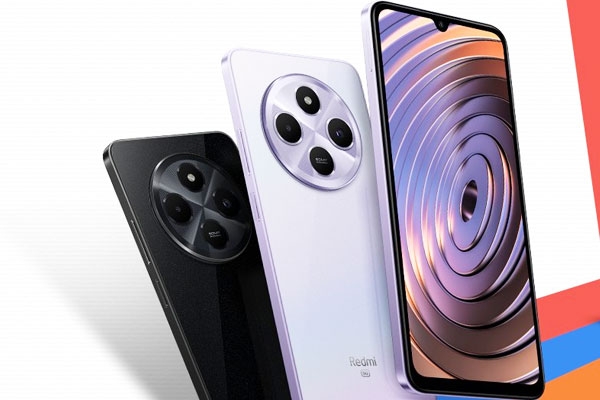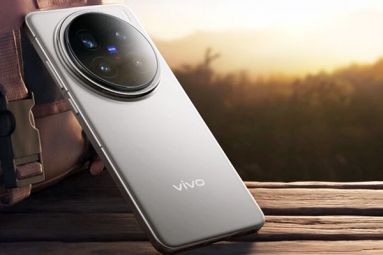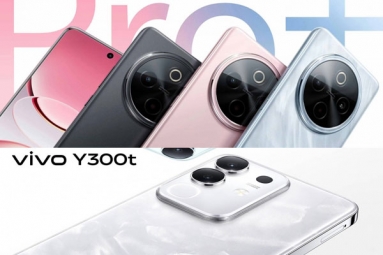
(Image source from: x.com/RedmiIndia)
The "premium" of the smartphone's cheap parts has led to a decline in the entry-level smartphone market. Currently, most people who are buying smartphones for the first time or have chosen high smartphone upgrades from a mid-range price point are looking for better camera quality, displays and battery life. This makes it easier for most smartphone buyers to justify 5G taxes, as 5G networks operate in most major Japanese cities. The entry section currently lacks features and most cell phones try to provide a smooth (or tolerable) software experience, so it has only been released in the last few years. Achieve more expensive products. The news that Xiaomi launched a new smartphone in this segment was excessively ignored at the end of 2024. However, as I mentioned in my first impression, this smartphone intends to offer something new and different to people buying smartphones for the first time.
The Xiaomi Redmi A4 is not like a regular entry level. You can choose between two finishes, Purple Purple and Starley Black. I have a sparkling purple color, but it looks like a modern cheap smartphone. The purple color has metal in the back area and the top circular camera module has a good Ardiel pattern. Both panels are made of glass, but the second names of the sandwich are made of polycarbonate, but they have a great finish. The back is not plastic, so it is difficult to avoid dust and dust. This is a very different approach to the main plastic options in other brands in this price range. The mobile weight is 212 grams, not too heavy, not too light, and Xiaomi also offers the IP52 main rank. However, please note that damage caused by submersion or water exposure is not guaranteed. Since the 6.88 inch screen is very large, it is difficult to work with one hand, especially because of the thick frame around the screen, especially the bottom thick frame.
Despite Hyperos' best scaling initiatives, large displays aren't quite as sharp as most high-priced budget smartphones. This is due to the HD+ resolution and size and the text is a bit smoother. I like Hyperos because it leverages the possibilities by using rich fonts and great scaling to avoid fraying. The Redmi A4 5G's display is bright enough indoors, but just bright outdoors. It's hard to see in direct sunlight and the viewing angle is terrible. Especially if you do it outdoors, you have the feeling that a privacy screen is already on the way. If it's off-center indoors, the contrast will decrease quickly. Surprisingly, Xiaomi offers solid Widevine L1 authentication on this device, so media and OTT app content is displayed as sharply as possible even if the screen doesn't support Full HD streaming resolution. The Qualcomm Snapdragon 4s Gen 2 SoC somehow handled the software when forcing the screen refresh rate to 120Hz. If you leave the automatic switching between 60Hz, 90Hz and 120Hz on, scrolling will produce absolute noise. A 120Hz display is neglected in its price range, but its sole purpose is to offer smoother software.
With only 4GB of LPDDR4X RAM and UFS 2.2, I wasn't expecting completely smooth software. Navigation is displayed through MEMC (high refresh rate) display technology, but is particularly noticeable when you need to change programs or load extras for 1-2 seconds. Program restarts are very common and are rarely remembered for long. Despite the excessive selection of third-party applications and games, the user can enjoy everything. I'm stuck on Android 14 and want to keep the user experience consistent regardless of Hyperos Mi SANS fonts being enforced across all third party apps and browsers. The rest of the software is usually from Xiaomi, which means spam notifications from the GetApps program.
A processor that offers a maximum clock speed of 2.0 GHz has advantages in terms of battery, but it doesn't really contribute to performance. We have benchmarks, but you can see the results below: This is typical for smartphones in this price range. The phone isn't designed for gaming, but I still tried playing some games. Essentials like Asphalt Legends 9: Unite your breaks on the road screen. This was the default graphics setting (set to F PS and 30 fps). Closing all other programs allowed me to start the game normally by clearing the RAM. However, even after release, the gameplay was not smooth, even when scrolling through the menu. Casual games and many things like subway surfing worked well. A hotly debated topic when it comes to cell phones is the selection of available 5G bands. Unfortunately, Xiaomi has only opted for a standalone 5G network (SA: N1/N3/N8/N8/N28/N40/N78) and not a non-standard network. Jio is the only operator in the country that supports a standalone 5G network, which is why many people are feeling this dissatisfaction. As for Airtel subsets, you can only access 4G/LTE bands with very slow data speeds.
When watching films or when answering calls, we found the individual loudspeaker downwards, even if the volume was somewhat weak. In contrast to most smartphones in this price range, this device has a fingerprint sensor and has performed the expected performance in the test period. FM radio is also available via the 3.5 mm headphone bush. Despite a large camera module, only one of the cameras is available to the user. The 50-megapixel main camera with a sufficiently light f/1.8 aperture takes decent photos with a decent dynamic range, few details and looks very soft even in sunlight. We recommend avoiding 2 times digital zoom because it further affects the image quality. The 5-MP selfies provide decent quality with decent edge recognition and visible noise in daylight. Portrait photos recorded with the main camera are sharp, but the background is out of focus. This problem also existed with the selfie camera.
Recordings in poor lighting conditions with both cameras lack texture and details and they look almost flat and unusable. The phone can record videos with up to 1080p (30 frames per second). There are not many details or sharpness in visible noise and moving motifs seem quite restless. The battery life is average for a entry-level smartphone and is 19 hours and 32 minutes in our video loop test. In daily use, the phone held out for a whole day or more, as it was more limited to occasional use due to its game and camera functions. Charging the device with a 33-W charger (a maximum of 18 W) took about two hours. Xiaomi has proven that it can bring 5G smartphones onto the market for less than 20 lach rupees. 9000. However, the big problem here is 5G connectivity. This is because only independent Jio networks are supported. If you are an Airtel subscriber, you can forget the USP of your phone because it only establishes a connection to the operator's 4G network.
Power users who run many apps, operate multitasking and want a high-quality camera and a good battery life may not be enthusiastic about the Redmi A4 5G. This telephone is primarily intended for first users of a smartphone who are limited to calling and using the basic use of social media. Against this background, Xiaomis Redmi A4 5G makes things a little different and packs everything essential in an attractive form factor. It sounds like an attractive phone for people who have a short budget and cannot afford to spend more than 2,000 rupees. 9000. On the other hand, Motorola offers the Moto G35 5G (test report) more for 300 rupees. The 2000 offers better hardware and a little more power.






